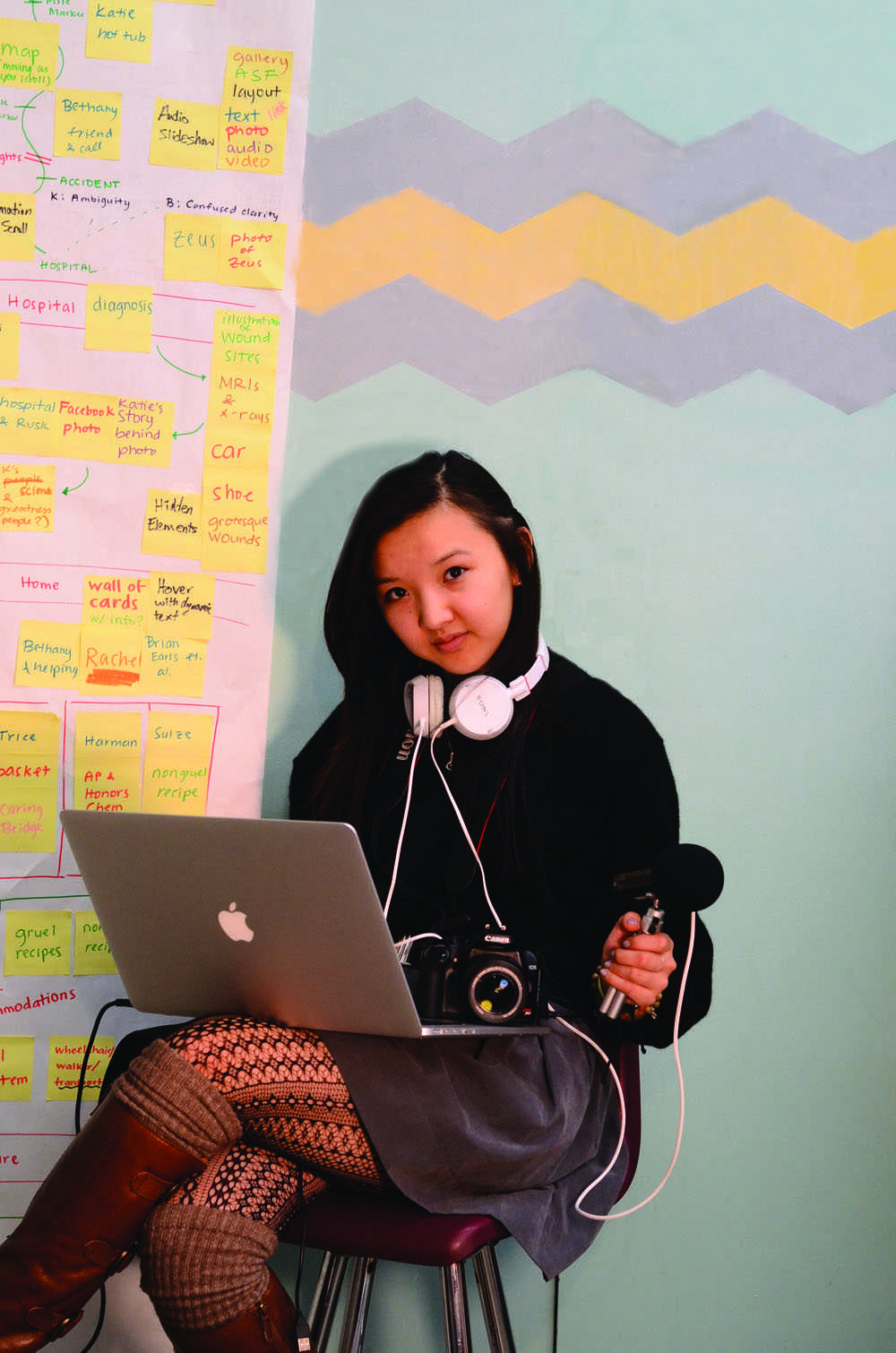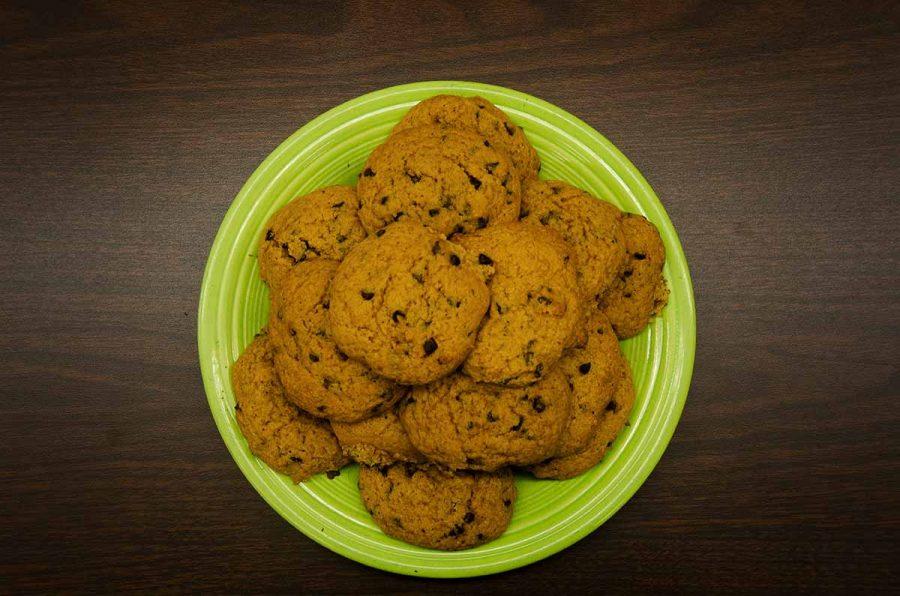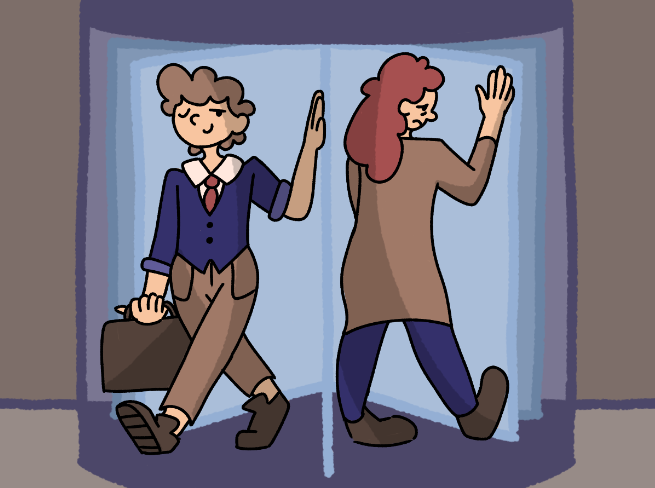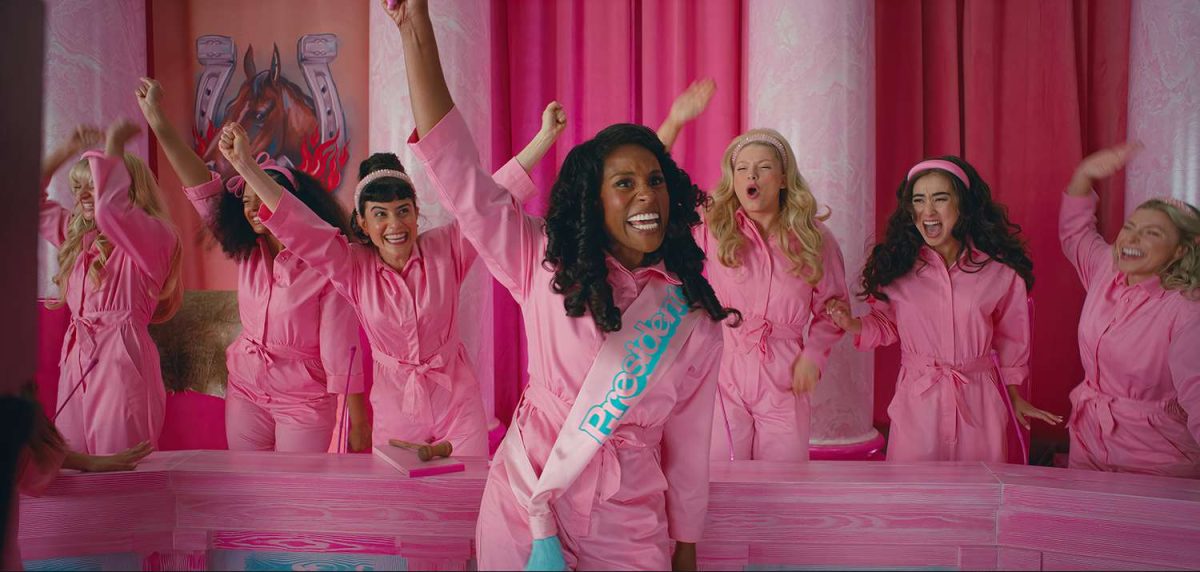
On day two, using his tray-on-wheels as a desk, he reviewed stoichiometry with me between sips of protein-milk and scoopfuls of pureed green beans, pausing to rest every few lines and grumbling about the new messiness of his scrawl.
On the fourth day, I’d met Gregory Kirchhofer’s mom and aunt and helped his youngest daughter put away groceries while former co-workers visited.
On the 16th day, I had a dozen hours of video footage and a score of audio already compiled. I felt the hardest interviews were complete, but my questions made another chemistry teacher’s voice crack and her tears fall at nine in the morning, in front of a class of students and under the buzz of fluorescent lighting. It felt uncomfortably inappropriate to witness — and record — that emotion.
For three weeks and one day, from my first visit to the publish date, I learned about every detail of Mr. Kirchhofer’s car accident and recovery.
In the beginning, it was awkward. Even though I’d visited patients as a volunteer at Boone Hospital, I’d always been better at conversing with the families or giving directions to visitors or chatting with the old ladies who worked in the gift shop. At the rehab center, Mr. Kirchhofer didn’t learn of his daily schedule until the morning of, so it was difficult to coordinate times to visit. At home, Mr. Kirchhofer had groups of friends, colleagues or students coming as others left, so there was never really time to sit quietly and answer questions.
I arranged my schedule with set times for set classes and after school or weekend activities, and his was ambiguous, vacillating between predetermined doctors appointments and surprise visitors. Past the struggle to coordinate times, though, there was the question of boundaries.
Even as my familiarity grew with him and his friends and family members, I wondered what was appropriate to ask and whether I should offer to help or just stand aside, cautious of overstepping or asking too much.
As time passed, I realized the issue of boundaries was entirely my own, that any discomfort was my own creation, that any awkwardness was essentially imagined.
So when he was busy, I sat and watched, observing the way he interacted with his nurses and hearing halves of phone conversations, taking pictures of his wall decorations and moving furniture with his daughters. When we interviewed, I asked an initial question and let him respond fully, without interruption, so that his answer twisted and morphed in whichever directions he chose; then, even when the response felt complete, I’d stay quiet until eventually he’d break the silence and ask for another question.
I learned the best positions in which to set up the Nikon for the video and the podcast recorder for the audio, and I learned to smile or nod rather than laugh or ‘mhm’ in agreement. I exchanged emails with the journalist at the Missourian who wrote the story the day after the accident, and
I spoke on the phone with the Highway Patrol trooper who was at the scene. Through weeks of investment, I learned about the timeline of the crash, shaped from the clear memories of strangers and those who know him best and the foggy recollections of the man in the driver’s seat himself.
In collecting the details of the accident, I also learned how to find his dad’s house in Switzerland using Google Earth. I now know his stance on gun control in schools. I’ve learned how to ask Zeus, his dog, if he needs to go out and how to velcro Mr. Kirchhofer’s boot back onto his left leg.
I have about 20 GB of information about Mr. Kirchhofer’s life, the greatest compilation, we agreed, of photos, video, audio and text about his accident, even more than hospital records and his personal collection. In terms of time commitment and sheer volume of material, this story was the biggest undertaking I’ve had in all three years of journalism at RBHS.
In telling this story, I have realized that the journalistic checklist –– getting the necessary quote or finding facts to provide meaningful transitions between those quotes or angling the camera just so –– those items are meant to be checked off after the fact, not in the act.
When the red light of a recorder blinks in front of you or you hide behind the camera, it’s easy to think of all the story’s components you still need to get, to reshape the article’s angle, to start composing eloquent ledes. But really, the best stories have hours of untold footage and unheard audio, unrecorded facts and afternoons spent just watching.
It has taken two and a half years to understand the point of chasing down interviewees and staying at school late into the evening, but now the lesson seems blatantly obvious: journalism provides an excuse, a premise, to learn about people’s lives, to build relationships and to tell their stories.
I believed everyone has a story, but this experience has reinforced the value of listening to and sharing those tales. From each anecdote, I gain perspective about the individual, but I also learn about the world and about myself.
Through interviewing, I learn that an ELL kid, whose phone is in Spanish, misses his grandma and younger sister back home but wants to work here and provide for them; that my substitute teacher in chemistry has a new fondness for Babies R Us; that my chemistry teacher and Global Issues sponsor has an incredible spirit; and that I have been astoundingly privileged for the opportunity to hear these stories and, even better, to share them.
By Nomin-Erdene Jagdagdorj
You can read Nomin’s story, A Long Journey Home, by clicking here.
















































































Gregory Kirchhofer • May 23, 2013 at 6:38 pm
What a gift. Thank You, Nomin.
Jay Whang • Apr 23, 2013 at 10:10 am
Briliant. Just brilliant. (no sarcasm)